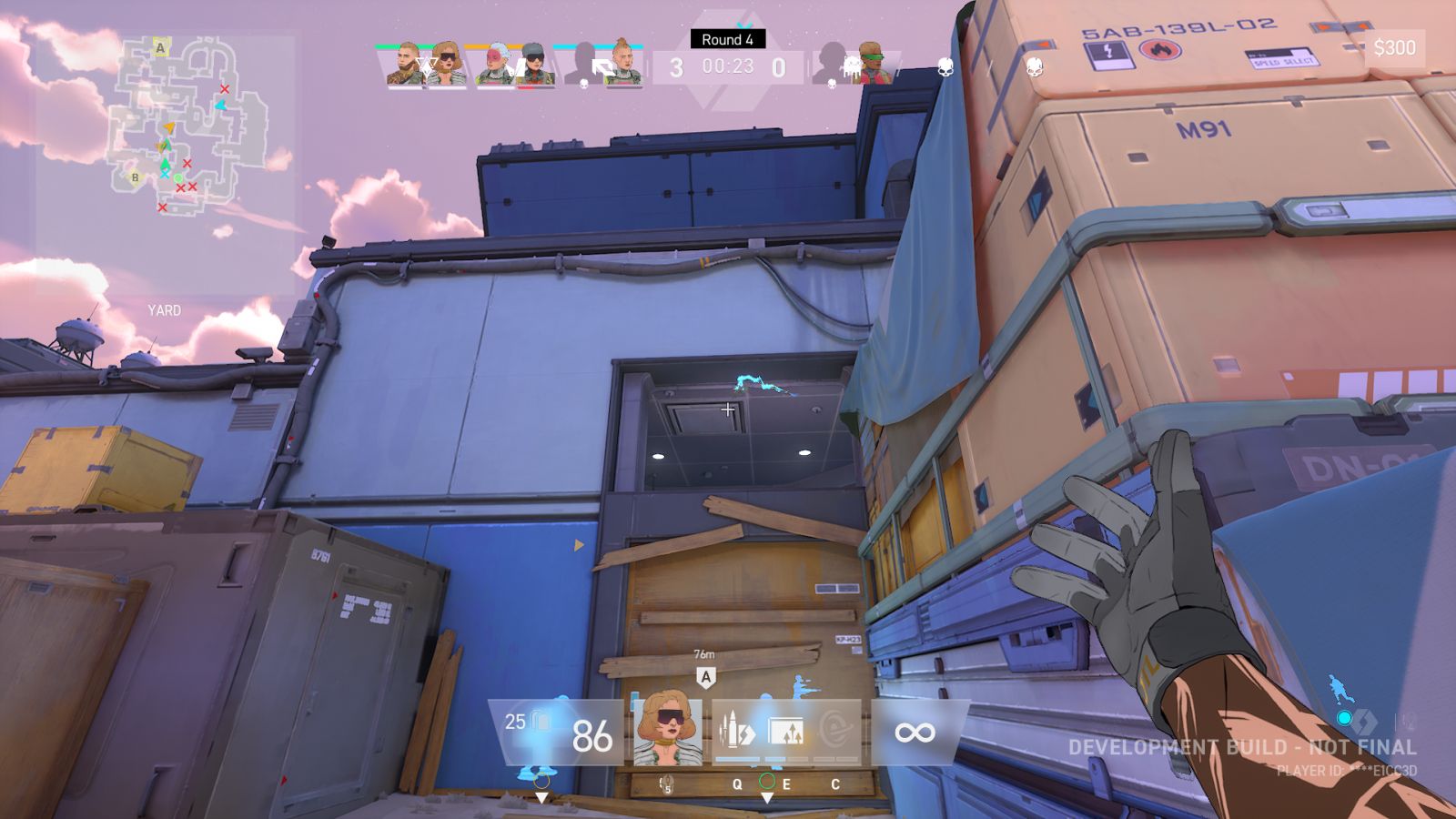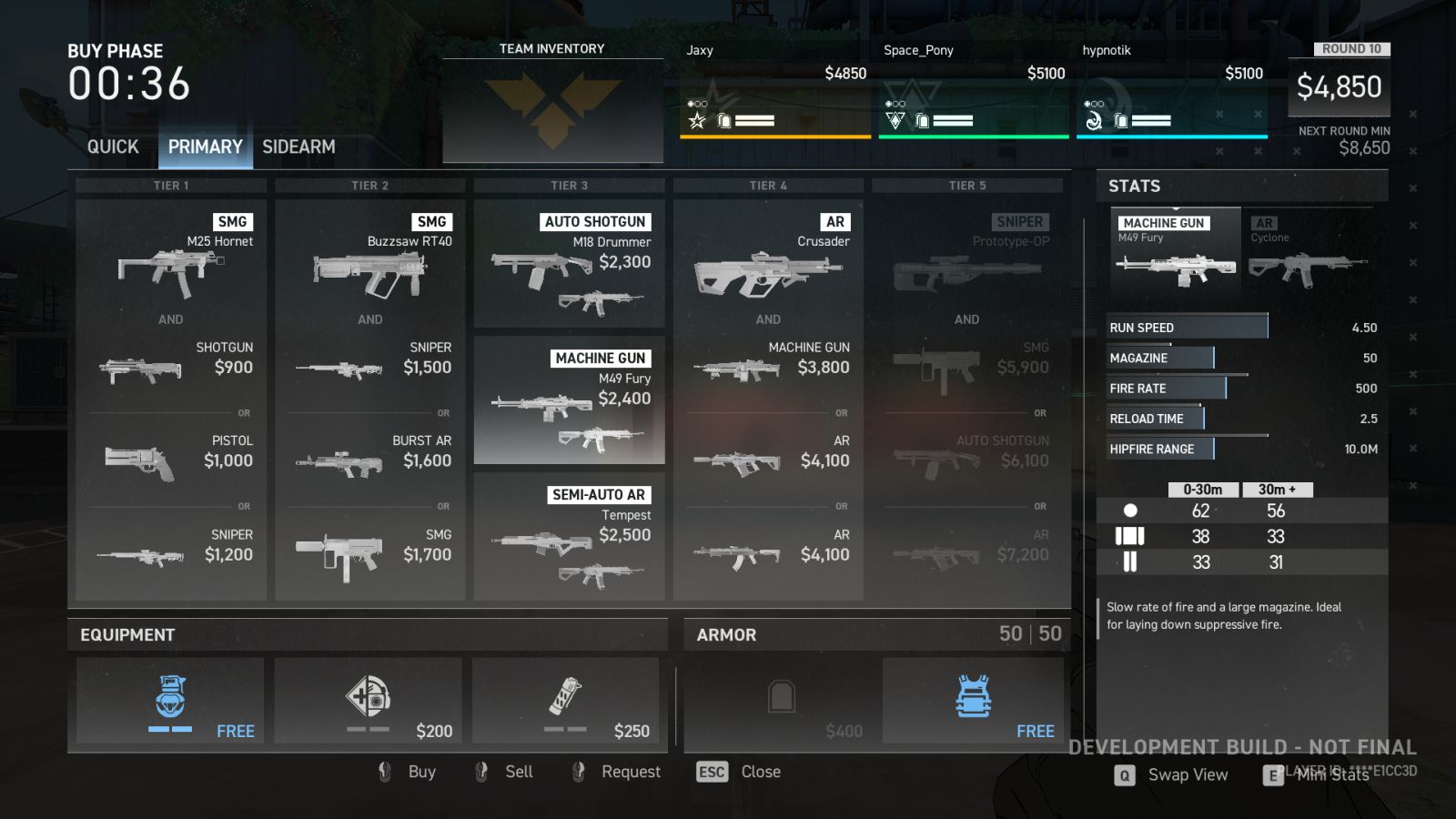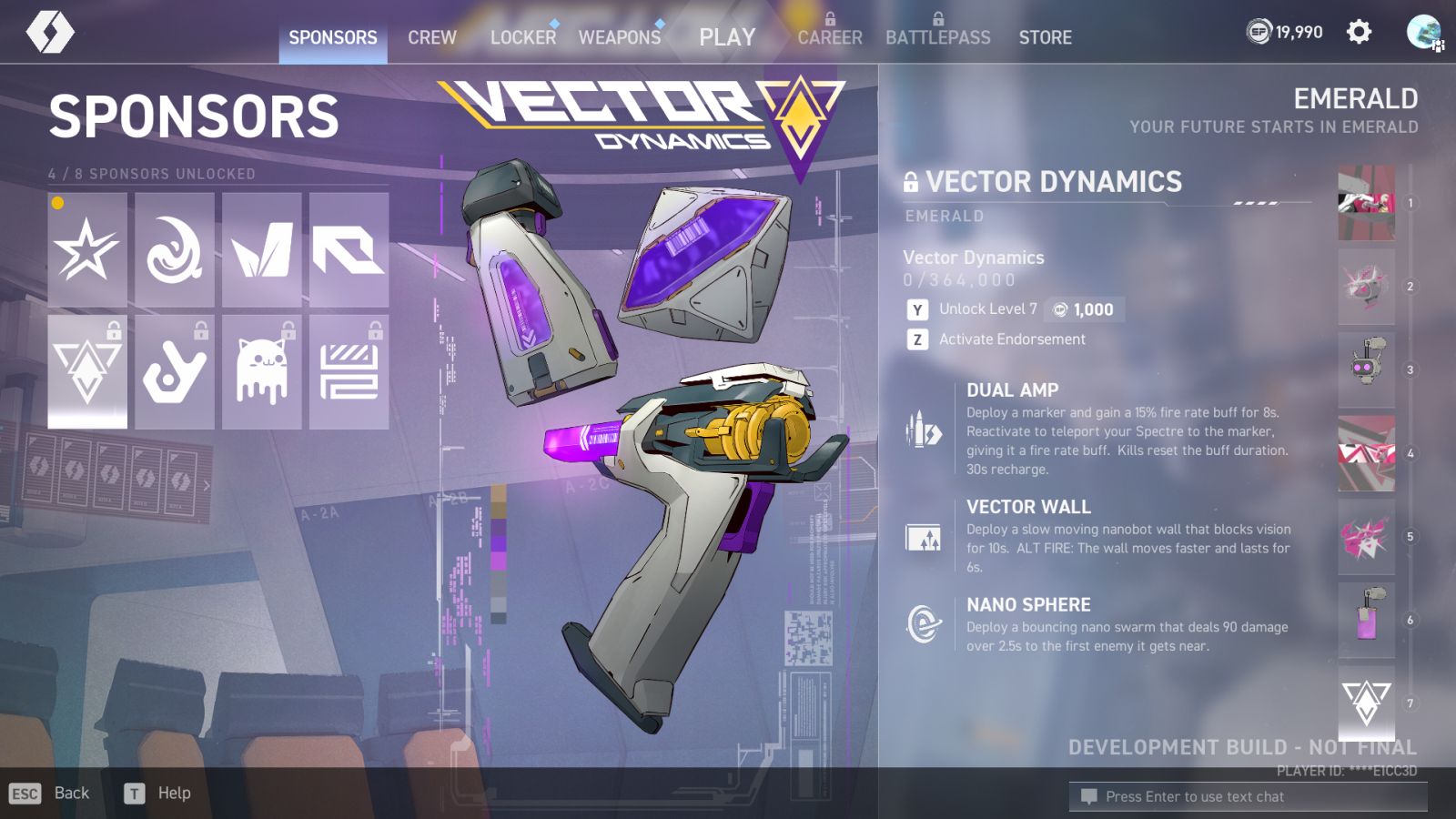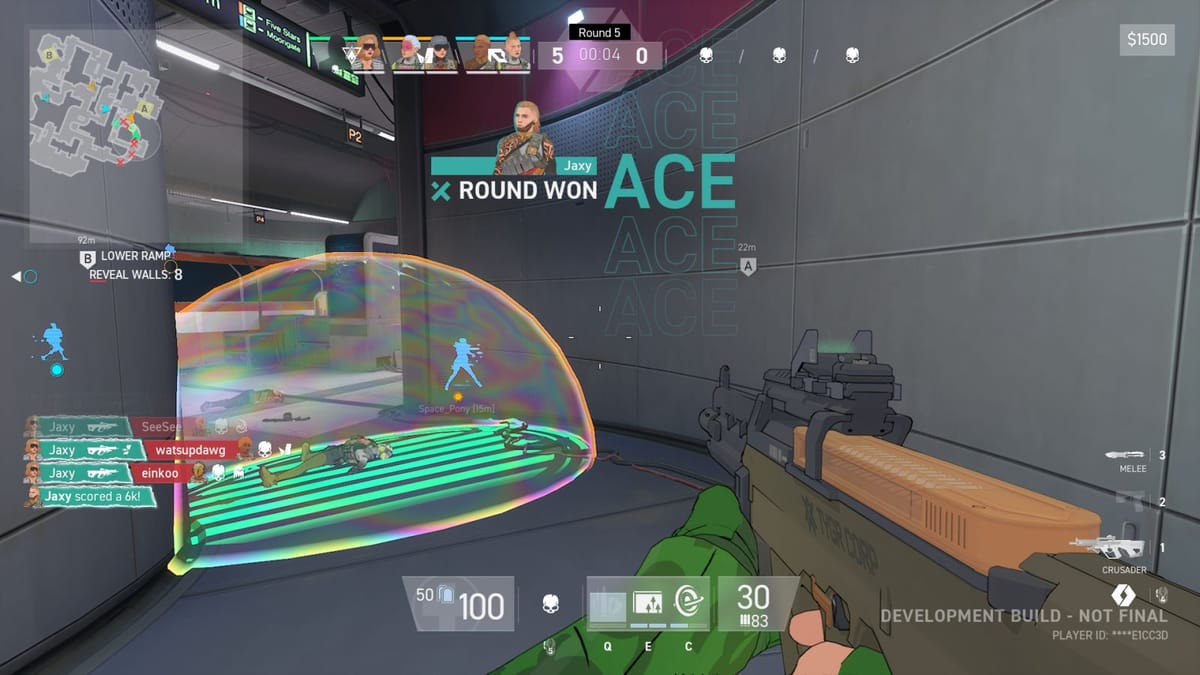
We live in a time where shooter games are evolving rapidly, with the mechanical requirements climbing higher and gameplay becoming faster. At the same time, I’ve noticed a trend in shooters in recent years: no one is using their comms anymore. I remember a time when one person speaking would set off a cacophony of responses, for better or worse. These days, players are lucky to find one or two people using a mic. Now more than ever, it’s important to have some friends to hop into a game with. Even that solution has its problems though. You know there’s always one or two friends in the group who are too busy at the moment, and you have to fill their position in with randoms. In sum, the skill ceiling is higher and the communication is disintegrating.
Well, dear reader, what if I told you about a new 3v3 tactical FPS game where you could provide cover for yourself? A game where you get a second chance after death. A game that incentivizes social interaction through its ranking system. A new tactical shooter that innovates on the genre by taking the fast paced elements from other genres, while having a cornerstone that renders it completely unique. Well friends, allow me to introduce you to Spectre Divide. A game I thoroughly believe will be the next FPS craze. I was recently lucky enough to be able to play the game during a preview event, so let me explain.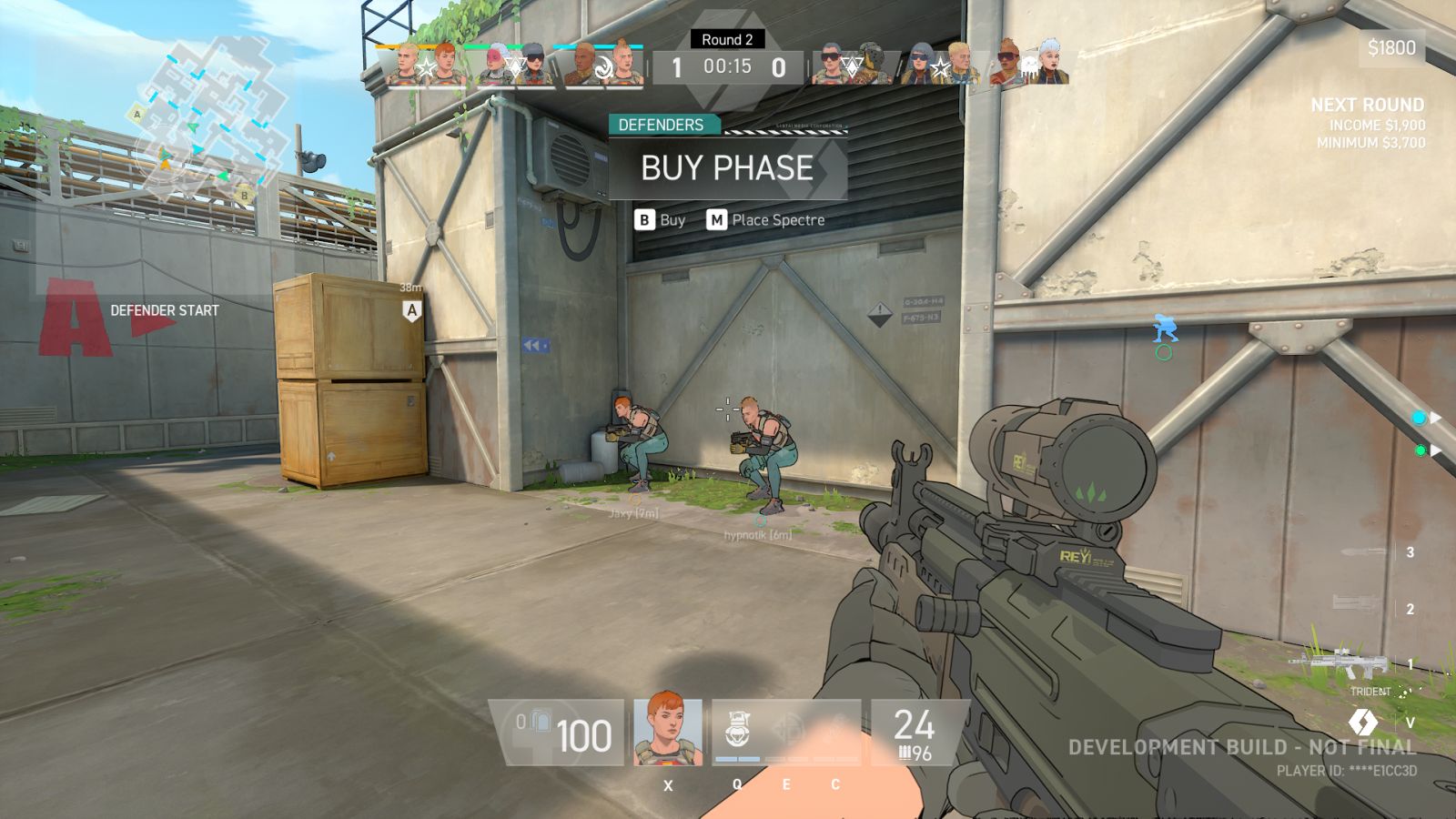
Spectre Divide pits two teams of three against each other in typical attack/defend a bomb site gamemode–think Counter Strike or Valorant–with the first to win eight rounds winning the match. The twist? The game features a system called Duality, meaning every player has an extra body called a spectre. Players can switch between their two bodies at will, but it takes a second to switch. Additionally, players can move the other body without switching to it by throwing their “puck” which will automatically begin the transfer once it lands. The transition is visually apparent, as the unused body appears as pulses following a wire made of energy on the path to its new placement. The further the puck from the body’s original position, the longer the transition will take.
In certain areas, there are glowing spots that reduce the time it takes for your spectre to arrive if your puck lands within its boundaries. However, these spots are that big, and they’re highly sought after, making them predictable. It’s important to weigh the risk vs reward if you choose to go for them. Remember, while not in use, your other body stays still, and will send you warnings if it hears enemies running close by or very close by. Players can avoid detection by walking, so there’s a risk and reward with spectre placement as well. It’s as satisfying to get a sneaky kill on an idle spectre as it is devastating to get the notification that your spectre has been killed.
At the beginning of every round, there’s a buy phase. The guns in Spectre Divide are bought in pairs, with one going to your main body and one going to your spectre. There are five tiers total, generally ascending in quality and price, with tiers one, two, four, and five offering a main gun, with the player picking one of three separate guns in the tier for their spectre. Tier three is the exception, as it has three set pairs of guns. The system can take a little getting used to at first, but it leads to players learning to value their spectre’s positioning, as the guns are often complementary to each other. The selection of weapons in the shop is pretty standard: high power sniper, burst rifles, shotguns, and SMGs are all on the table. In addition, the game features true-to-crosshair shooting and there’s no accuracy penalty while moving. These features, combined with your second life, make the game feel faster and give the player more up-time per match, all while keeping the gameplay tactical.
You’ll be making choices before the match even begins, because in the lobby, you choose a sponsor. Sponsors enable you to buy and use certain abilities that are tied to them. One of the abilities is based off of a cooldown, and you buy charges for the rest during the buy phase. My favorite sponsor during the play test was Vector Dynamics, who have a cooldown based fire rate buff, a moving wall that blocks vision, and a ball that deals damage to the first enemy it touches, ricocheting off each wall it hits like an ominous version of the bouncing DVD logo. The fire rate buff also deploys a marker, and then allows you to teleport your spectre to said marker when you reactivate it, triggering the buff on the spectre as well. The marker applies after death as well, so if you get killed while it’s active, you can get some surprise revenge by teleporting your spectre in. Healing drones, duplicate clones, proximity mines, barriers, and cluster grenades are just a fraction of the abilities that can be found in other kits. Keep in mind that sponsors are one per player per team, with a total of eight to choose from.
Spectre Divide decreases your reliance on teammates by giving you another body, but that doesn’t mean they’re shirking their duty to create a social environment. The Crew system is “a social engagement based competition” as described by Game Director Lee Horn, who went on to further explain the system. You’re automatically randomly assigned to a crew–although you can join your friend’s–of about 50-60 players, and you earn points by playing games with them. Competitions are weekly, with the top crews moving up in the ranks and the bottom crews falling down. It doesn’t matter what you play or how well you play it, as long as you’re with your crew, you’re getting those sweet, sweet crew points. The rewards for winning are going to be division badges, XP for your account level, and end of season gifts.
Coordinating with teammates is still as important as ever, and Spectre Divide makes it seamless to understand what your teammates are doing. During the buy phase of the match, before you can enter the rest of the map, you can open a mini-map to position your spectre’s starting point and see where your allies have placed theirs. During the match, you can see where your allies are looking, as their aim is telegraphed by a laser sight. At the same time, if those teammates are wiped out, then you can cover yourself while planting the bomb by switching to your spectre. The way the game simultaneously assists you in synergizing with your teammates while empowering you to shine as an individual feels very seamless and refined. That level of refinement makes sense, as the game is backed by and stress tested by competitive FPS legend, Shroud.
The game will launch with four distinct maps with the typical two bomb-site layout. Defenders have to wait before they can flank deep into enemy territory, as the attackers side is a zone that will alert them to intruding defenders. These zones dissipate after some time, enabling sneaky flanks. There are also elevated positions that players can only reach by throwing their puck, as well as locked doors and other map obstructions that can be surpassed in the same manner.
Overall, I am relentlessly hyped for Spectre Divide. It simply offers immaculate evolutions to the tactical shooter genre to bring it up to speed with modern gaming, without breaking it. During the press event, it became clear that this is a team of developers who have a blazing passion for the genre and a collective untold thousands of hours in it. While we don’t have a release date yet, you can count on GamingTrend to keep you posted.

